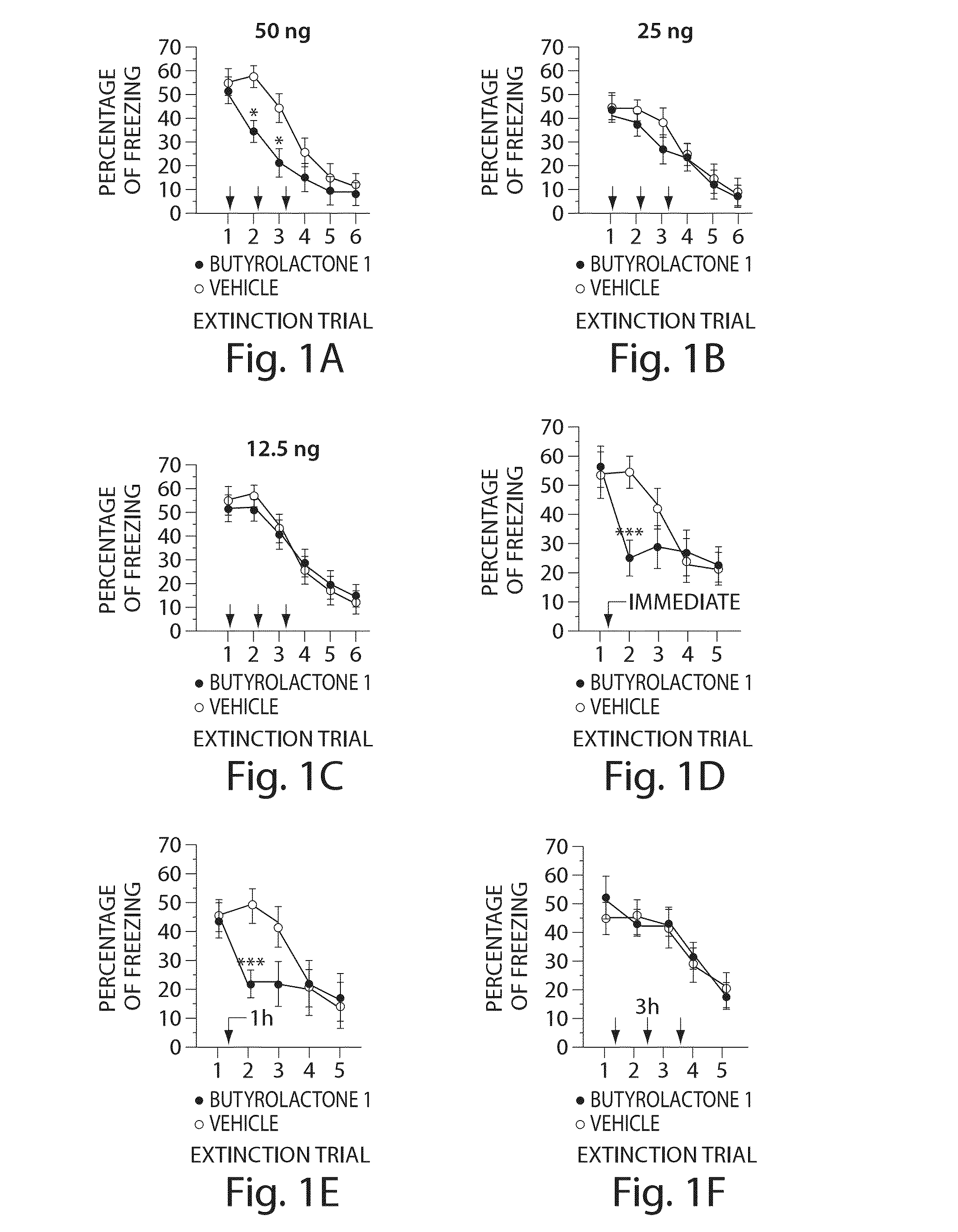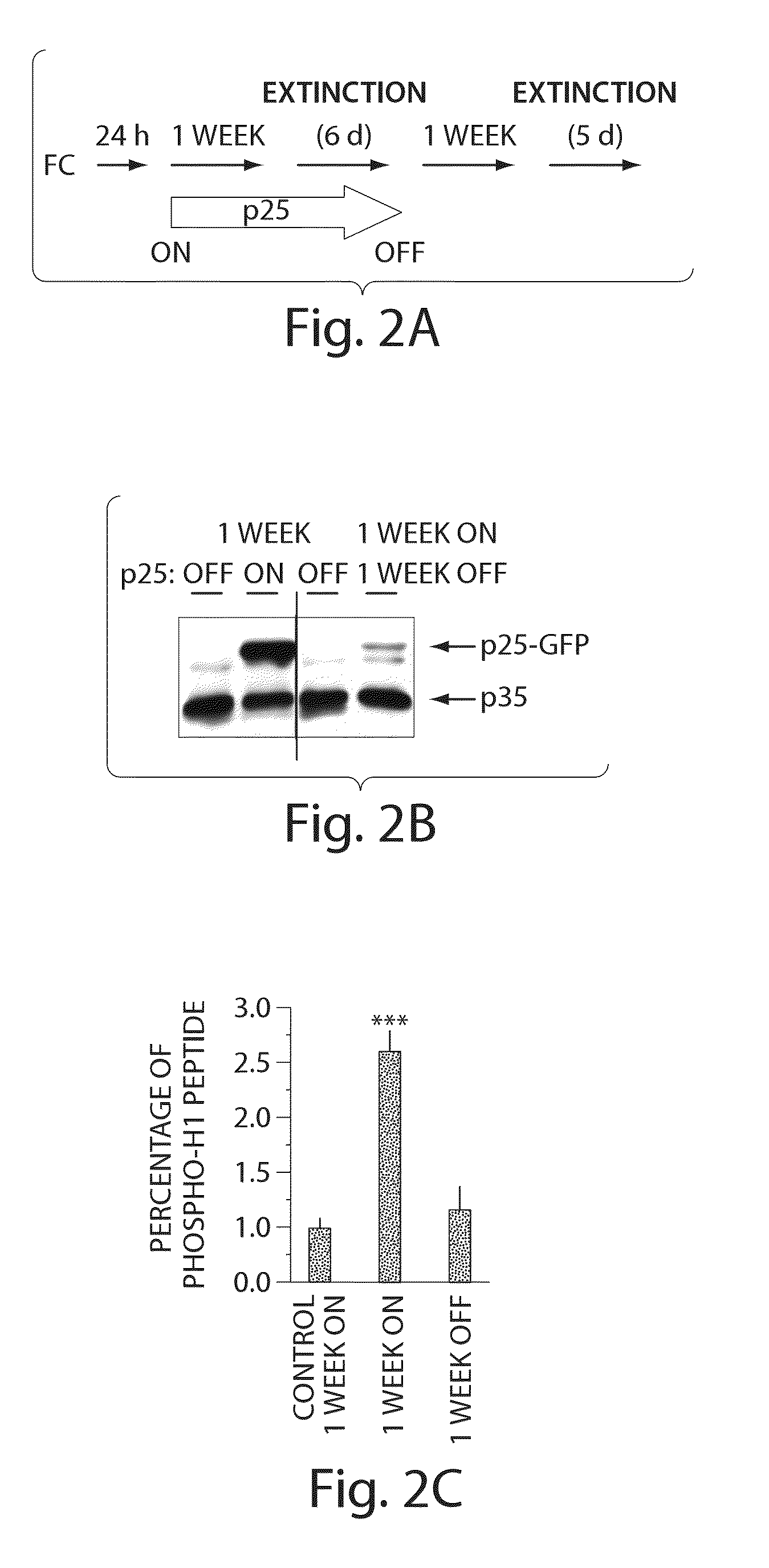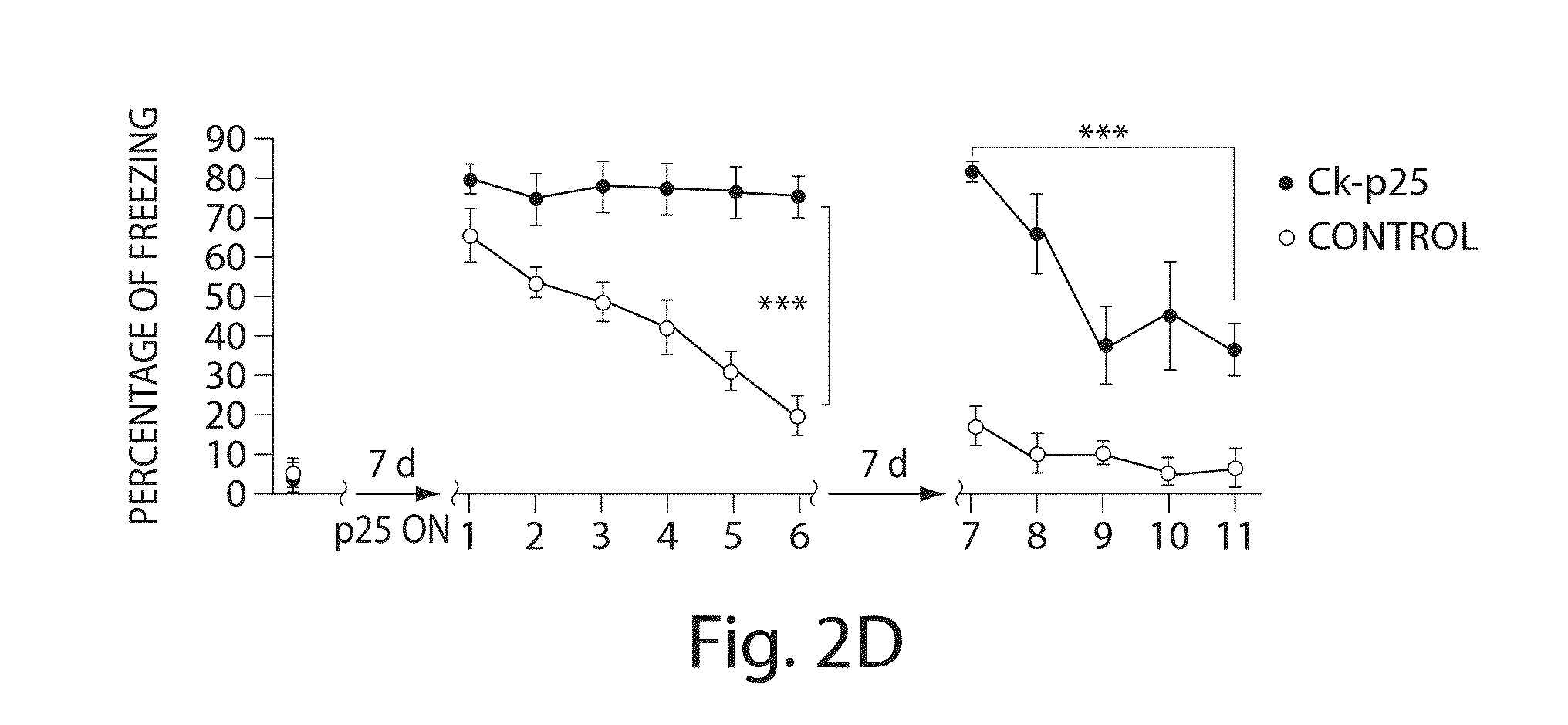Methods for treating stress induced emotional disorders
a technology for emotional disorders and stress, applied in the field of methods and products for treating emotional disorders, can solve the problems of increasing burden on our societies and severe affecting the life of patients
- Summary
- Abstract
- Description
- Claims
- Application Information
AI Technical Summary
Benefits of technology
Problems solved by technology
Method used
Image
Examples
example 1
Inhibition of Cdk5 Activity Facilitates Extinction
[0116]To test for a role of Cdk5 activity during extinction of learned fear, mice were implanted with microcannulae into the dorsal hippocampus (i.h.) and trained in the contextual fear conditioning paradigm. Fear conditioning consisted of a 3 min context exposure followed by a single electric foot shock (0.7 ms, constant current, 2 s). Subsequently, all mice were subjected to a daily extinction trial (E) on 6 consecutive days (E1-E6). Each extinction trial consisted of a 3 min re-exposure to the conditioned context without presenting the foot-shock again. It was previously shown that in this extinction paradigm mice usually display a significant reduction of aversive freezing behavior upon 4-6 extinction trials that are performed on consecutive days6.
[0117]Immediately after the exposure to E1-E3, mice were injected (i.h.) with either vehicle or 3 different concentrations of the Cdk5 inhibitor butyrolactone I. Injection of 50 ng buty...
example 2
Increased Cdk5 Activity Impairs Extinction
[0119]The effect of increased Cdk5 activity on extinction was investigated. To this end CK-p25 Tg mice where forebrain specific expression of the potent Cdk5 activator p25 can be switched on and off by a doxycyline diet19 were used. We previously showed that expression of p25 for 1-2 weeks increased Cdk5 activity in the hippocampus without causing any neuronal loss19. CK-p25 Tg and control mice were subjected to contextual fear conditioning. p25 expression was induced 24 h later for 1 week (FIG. 2a, b), which led to increased hippocampal Cdk5 activity (FIG. 2c). At this time point mice were subjected to 6 consecutive extinction trials (see FIG. 2a). In contrast to control mice, no reduction of freezing behavior was observed in CK-p25 Tg mice (FIG. 2d). Next, doxycycline was re-introduced to the diet leading to the repression of p25 expression (FIG. 2b). Consistently hippocampal Cdk5 activity declined to baseline levels when measured 1 week l...
example 3
Extinction Depletes Cdk5 Activity from the Membranes
[0120]To gain further insight into the mechanisms by which Cdk5 regulates extinction, we measured Cdk5 / p35 levels during extinction. To this end E1 vs. E3 were compared because in our paradigm the molecular mechanisms activated after E1 (mice show no extinction during subsequent E2) vs. E3 (mice show significant extinction during subsequent E4) might be different. Based on our previous observation that Cdk5 activity is required for extinction within 1 h after an extinction trial (see FIG. 1d-f) we focused the molecular analysis on the time-point 0.5 h after an extinction trial.
[0121]Immunoblot analysis of total protein-lysates prepared from the hippocampus 0.5 h after E1, E3 or from naïve mice revealed no significant difference in p35 / Cdk5 levels. We next examined the subcelluar distribution of Cdk5 / p35 during extinction. Hippocampal lysates were prepared 0.5 h after E1, E3 and from naive animals and separated into membrane and non...
PUM
| Property | Measurement | Unit |
|---|---|---|
| pH | aaaaa | aaaaa |
| particle size | aaaaa | aaaaa |
| particle size | aaaaa | aaaaa |
Abstract
Description
Claims
Application Information
 Login to View More
Login to View More - R&D Engineer
- R&D Manager
- IP Professional
- Industry Leading Data Capabilities
- Powerful AI technology
- Patent DNA Extraction
Browse by: Latest US Patents, China's latest patents, Technical Efficacy Thesaurus, Application Domain, Technology Topic, Popular Technical Reports.
© 2024 PatSnap. All rights reserved.Legal|Privacy policy|Modern Slavery Act Transparency Statement|Sitemap|About US| Contact US: help@patsnap.com










